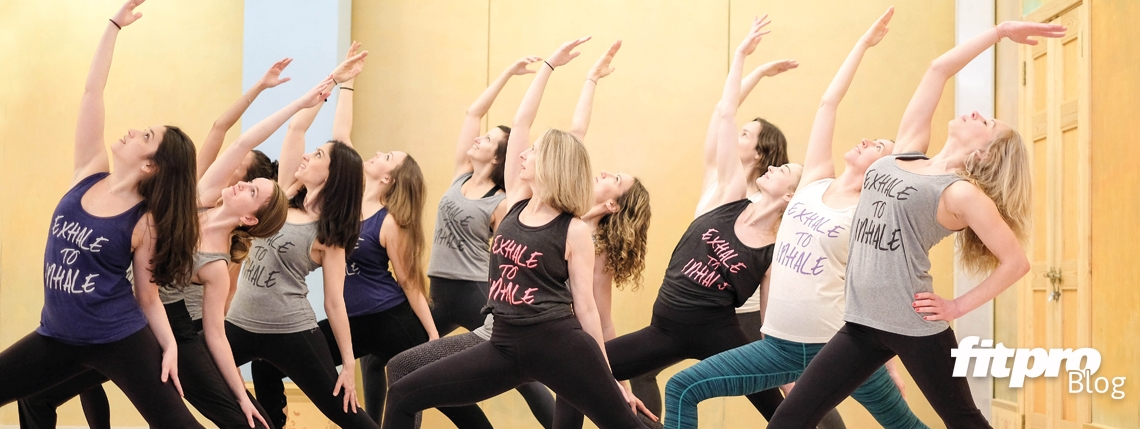What Exhale to Inhale does is more than just yoga.
Listen to the women who have experienced the Exhale to Inhale methods of healing:
Exhale to Inhale’s trauma-informed yoga classes are a tool that help survivors to reconnect to the power and the strength that they have and have always had inside them, so that they may create the lives they want to live. The money we raised during the 2017 crowdrise campaign was so critical for us. The yoga mat is a safe place where people can begin to reconnect with themselves, practise making choices, express when something doesn’t feel right to them and figure out what would work better.
The theme of this year’s crowdrise campaign is #itstimetoheal. The #metoo and #timesup movements have empowered people to speak out; they have elevated the conversation around domestic and sexual violence, and they’ve made it clear that these issues aren’t just women’s issues. They’re human issues, business issues, community issues and public health issues. Now, #itstimetoheal.
Did you miss out on reading our article on trauma-informed yoga in the Fitpro Spring magazine? Read on to find out more about the format of a trauma-informed yoga class.
Over the course of a lifetime, many people will experience traumatic events, for example road traffic accidents, assaults or natural disasters. After the trauma, they will feel distressed and may experience symptoms of insomnia and anxiety. Although symptoms will sometimes go away, they can persist and some individuals go on to experience post-traumatic stress disorder (PTSD). This can be a severe and disabling condition, characterised by flashbacks, nightmares, avoidance, numbing and hypervigilance. PTSD is often co-morbid with other mental health disorders, including depression and substance misuse( ref 1,2,3). The Yoga Clinic in London offers classes and treatment for those individuals who are looking for a safe environment to work out in (ref 4). What do we mean by safe?
According to The Yoga Clinic, there are a number of things that could make a yoga class feel unsafe:
- Class size is too large and people are close together
- Instructor dresses in revealing clothes
- Being touched without being asked
- Sessions always involve partner work
- Students are singled out with compliments and criticisms
- Students are expected to wear tight yoga clothing
- Little understanding of the triggering or dissociative potential of yoga props (straps and blocks) and language (‘stand like a tree rooted to the ground’)
- Instruction can be commanding in tone, rather than invitational
- Emphasis is placed on achieving an ideal, externally judged shape ( ref 4)
In trauma-informed classes, teachers will be informed about triggers, flashbacks, dissociative states and overwhelming emotions, they will make space for you to step out of any practice or class, they will attend to the dynamics of safety (especially as they might affect trauma) and have contact details of reputable therapists. Class participants will not be expected to share their stories or memories of trauma.
Who offers this style of teaching?
Since 2003, The Trauma Centre in Brookline, Massachusetts has been offering a very particular form of yoga to a variety of complex trauma survivors, including war veterans, sexual assault survivors, and at-risk youth and survivors of chronic childhood abuse and neglect. The practice is called Trauma Centre Trauma Sensitive Yoga (TCTSY). TCTSY is now recognised on the National Registry of Evidence-based Programmes and Practices (NREPP).
“For many of the individuals who attend TCTSY sessions, their body has been controlled or manipulated by someone,” begins Jenn Turner, assistant director of yoga services at the Trauma Centre. “In the aftermath of trauma, survivors learn how to disconnect with their body. Teachers aren’t then getting access to trauma in its raw content if individuals only talk about and write about their trauma.”
The classes focus on introspection – the act of feeling what’s in your own body and within your own skin. There is also a focus on choice and empowerment in the classes. Compared to other yoga practices, the teacher may invite the attendee to move, but it’s not directed; attendees aren’t told what to do with their body. I spoke to yoga teacher Amanda Wright, who delivers a yoga class for individuals who have experienced trauma and mental health problems at triyoga in London. “I have noticed with a lot of my clients that they breathe how they wish to breathe. One woman I work with has obsessive compulsive disorder and she sighs a lot. I don’t force my suggestions. I think ‘shapes’ is a nice word to use instead.” Wright continues, “I don’t touch, I help them verbally, and I don’t promise a result.”
Yoga for domestic violence survivors
Exhale to Inhale (ETI) is a charity that aims to transform the lives of and empower those affected by domestic violence and sexual assault. ETI uses the healing practice of trauma-informed yoga, as well as helping communities to develop their skills and knowledge to support them. Most of the teachers (who are all volunteers) have at least 200 hours of yoga teaching certification and have undergone advanced coursework in trauma-informed yoga in areas such as: language to use and avoid; how to set up a room to create a safe space; how to conduct yourself as a teacher; and what to do if a student is triggered.
“Domestic violence isn’t just a women’s issue: it’s a human issue, a community issue, a business issue and a public health issue,” says founder of Exhale to Inhale, Zoë LePage.
Amy Tobin, Exhale to Inhale board president, adds, “The classes typically begin with simple movement and breathing actions. We meet our student where they are. Many of the classes take place in domestic violence shelters, agencies and rape crisis centres. Some women come to classes with injuries or physical limitations and do some of our classes entirely from a chair. We ask our students to track sensation in the body and make their own choices. We don’t have yoga props – we ask our volunteers to work with what they have available to them. The class highlights awareness of breath rather than any particular pattern of breathing.”
The methodology of teaching at ETI does not use touch assists. ETI believes that ‘touch’ can be healing but, given the trauma history of their students, it is not included. Students in an ETI class are said to be more talkative than your average yoga class. Students often call out during a class if they are feeling a sensation in their body – ETI doesn’t enforce the silence of a ‘typical’ yoga class. The class offerings are currently being delivered in New York City, Westchester County, Connecticut and Los Angeles. The charity has also just started to offer public trauma-informed classes at community centres and yoga studios. The students who attend the sessions typically have a therapist or case manager at the facility where the class is held.
So what have the volunteers gained from delivering the classes?
“The experience of feeling safe in a yoga class was part of what inspired me to leave a physically abusive relationship. During the Savasana pose after a vigorous flow at my local studio, I had such a powerful feeling of comfort, and it occurred to me that this was the first time in as long as I could remember that my body felt safe and cared for. I had forgotten what it was like to feel at home in my own body and I told myself that I would never lose that feeling again.
“Years later, I’ve kept that promise to myself. Every class I lead is an attempt to show my gratitude for the practice that may well have saved my life. If I can help one woman feel more like her body is a safe place that she is in charge of, I’ll have fulfilled my purpose as a teacher. In a trauma-informed class, watching students make their own choices for their own bodies is the best possible progress,” says Sarah Yurch, a volunteer teacher. For several years in a row, Exhale to Inhale has partnered with the Times Square Alliance in its solstice in Times Square – an all-day, donation-based yoga event in the heart of New York.
For references mentioned in the article, please visit www.fitpro.com/references
Readers can donate or create their own fundraising page here: https://www.crowdrise.com/o/en/campaign/itstimetoheal-exhale-to-inhale
Where next? Find out how you can make your facility more eco-friendly. Click HERE
Check out our yoga teacher insurance cover







